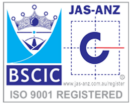Introduction:
Lean Six Sigma, a methodology revered for its efficacy in quality improvement and process optimization, intricately weaves Japanese terminology into its fabric. This linguistic integration is not arbitrary but rather a homage to the historical roots and foundational principles of Lean Six Sigma. In this exploration, we delve into the origins of Lean Six Sigma within Japanese manufacturing practices, emphasizing the profound influence of methodologies like Total Quality Management (TQM) and the Toyota Production System (TPS).
Origins in Japanese Manufacturing Practices:
Total Quality Management (TQM):
Lean Six Sigma draws inspiration from various quality improvement methodologies, with Total Quality Management standing prominently among them. Originating in post-World War II Japan, TQM emphasized the involvement of all employees in continuous improvement processes. The Japanese manufacturing sector, rebuilding from the war’s aftermath, embraced TQM’s principles to enhance product quality and operational efficiency.
Toyota Production System (TPS):
The cornerstone of Lean Six Sigma’s Japanese roots is undoubtedly the Toyota Production System (TPS). Developed by Toyota in the mid-20th century, TPS revolutionized manufacturing with its focus on minimizing waste, continuous improvement, and just-in-time production. Concepts such as “muda” (waste reduction) and “kaizen” (continuous improvement) became integral to Lean Six Sigma, showcasing the profound influence of Japanese manufacturing practices on this methodology.
Global Adoption and Standardization:
Honoring Origins:
As Lean Six Sigma transcended its Japanese origins and gained international recognition, a pivotal decision was made to retain Japanese terminology. This choice was not merely linguistic; it was a deliberate effort to honor the methodology’s historical roots and maintain consistency with the established practices. The decision to preserve Japanese terminology pays homage to the innovative practices of Japanese thought leaders, with Toyota leading the way in shaping modern quality improvement methodologies.
Recognition of Japanese Contributions:
Japanese organizations and thought leaders have significantly shaped the landscape of quality and process improvement. Recognizing this, the global adoption of Lean Six Sigma with Japanese terminology serves as a nod to the contributions of visionaries who paved the way for innovative management practices.
Cultural Significance:
Beyond Geographical Boundaries:
The use of Japanese words in Lean Six Sigma goes beyond a linguistic choice; it encapsulates the cultural significance of the methodology. It signifies that the principles embedded in Lean Six Sigma are not confined to a specific geographical region or industry. Instead, they are universally applicable, resonating with diverse cultures and industries worldwide.
Emphasizing Global Nature:
By retaining Japanese terminology, Lean Six Sigma emphasizes its global nature. The methodology transcends cultural and linguistic barriers, fostering a shared understanding of its principles. This inclusivity aligns with the overarching goal of Lean Six Sigma: to bring about universal improvements in efficiency, quality, and customer satisfaction.
Clarity and Uniformity:
Standardized Communication:
The use of Japanese terms in Lean Six Sigma serves a practical purpose – it provides a standardized and universally recognized way of referring to specific concepts. This linguistic uniformity facilitates clear communication among practitioners, ensuring a shared understanding of Lean Six Sigma principles irrespective of language or cultural background.
Facilitating Global Implementation:
In a world characterized by diverse languages and cultures, the standardized terminology of Lean Six Sigma becomes an invaluable asset. It facilitates the global implementation of the methodology, allowing organizations and practitioners worldwide to seamlessly adopt and apply Lean Six Sigma principles.
In Conclusion:
In essence, the integration of Japanese words in Lean Six Sigma is a nuanced tribute to the methodology’s historical roots and the enduring legacy of Japanese manufacturing practices. Whether drawing inspiration from Total Quality Management or the groundbreaking Toyota Production System, Lean Six Sigma encapsulates the wisdom of Japanese methodologies. As it continues to evolve on a global stage, the choice to retain Japanese terminology signifies a commitment to inclusivity, clarity, and a shared cultural understanding. Lean Six Sigma, with its linguistic tapestry woven with Japanese threads, stands as a testament to the enduring impact of Japanese contributions to quality and process improvement worldwide.




